Please use care while exploring your Tiny Turtle Nest. To avoid adding more unnecessary plastic to the world, your nest was constructed with tiny glass, metal, shell, and paper materials to provide an attractive, eco-friendly, and quality keepsake. Children should be supervised by an adult at all times while handling the Tiny Turtle Nest.
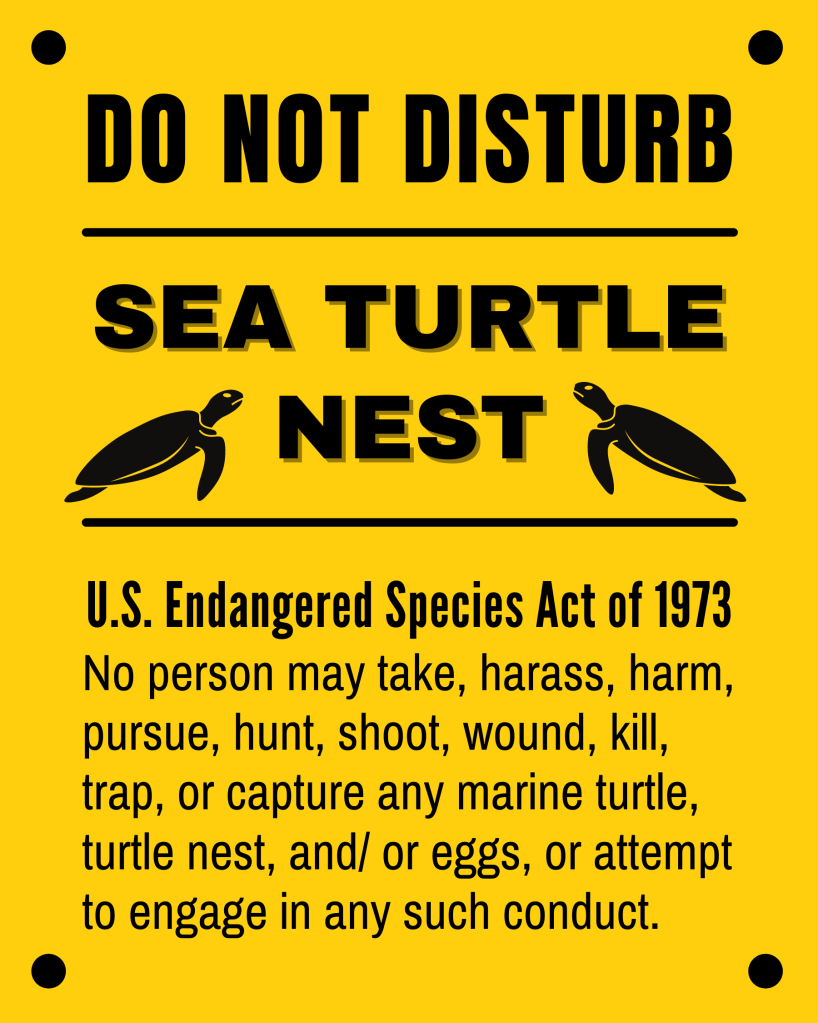
This simulation lets you get a tiny experience of what real-world sea turtle nest surveyors do to help document sea turtle populations across the planet. Your Tiny Turtle Nest holds all the clues you need to virtually travel to a nesting beach, identify the species of a nesting sea turtle, and document a sea turtle nest.
All about sea turtle nesting:
Sea turtles and their nests are internationally protected. Even though sea turtles have been nesting on beaches long before we arrived on scene, they now have to share the beaches with humans. Please give them space! If you are ever lucky enough to witness a sea turtle emerging onto the beach to lay eggs, please do everything you can to avoid disturbing her. Sea turtles are virtually defenseless on land. Bright lights, fast movements, unfamiliar noises, and the sight of humans nearby will often convince her to turn back to the safety of the ocean instead of nesting.
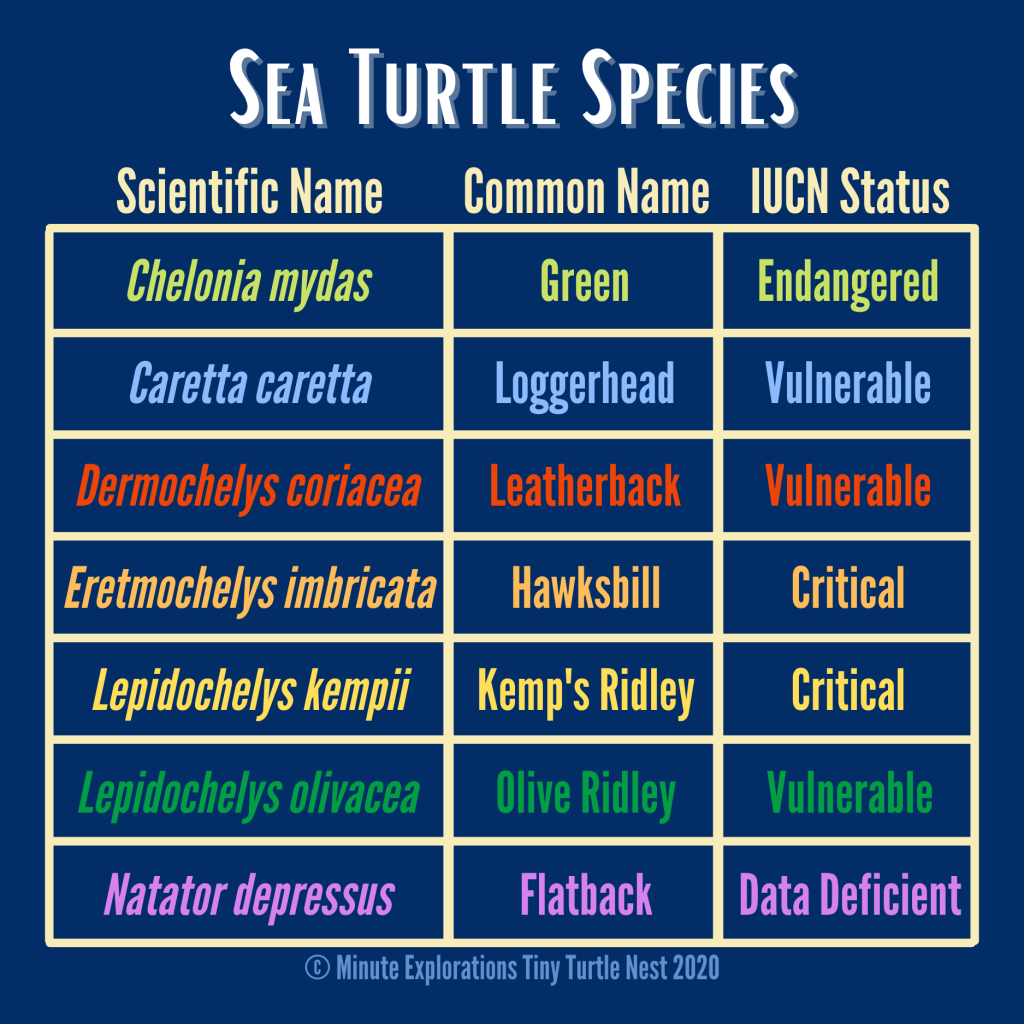
Location, Location, Location:
Location matters! Some sea turtle species have much larger nesting ranges than others.
Your Tiny Turtle Nest contains clues to when and where your turtle laid her nest. Enter the coordinates from your Tiny Turtle Nest at https://www.google.com/maps to discover where your nest is located!
When was the nest made?
Timing matters! Most sea turtles emerge individually and most often after dark to nest. The Ridleys, however, are the exceptions. Both Olive Ridleys and Kemp’s Ridleys tend to group together and nest in large events called arribadas. Kemp’s Ridleys also tend to prefer to nest during the day! Sea turtle nest surveyors typically arrive before dawn to check the beaches for tracks, new nests, and even sea turtles still in the process of laying eggs.

Walk this way!
Crawls are the set of tracks that a turtle leaves behind on the beach. Occasionally, the mother sea turtle may be still visible on the beach, but surveyors often only find her crawl. Luckily, different of species of sea turtles leave different sizes and patterns of flipper and tail marks, so the tracks can often be used to identify the species of the nesting female.
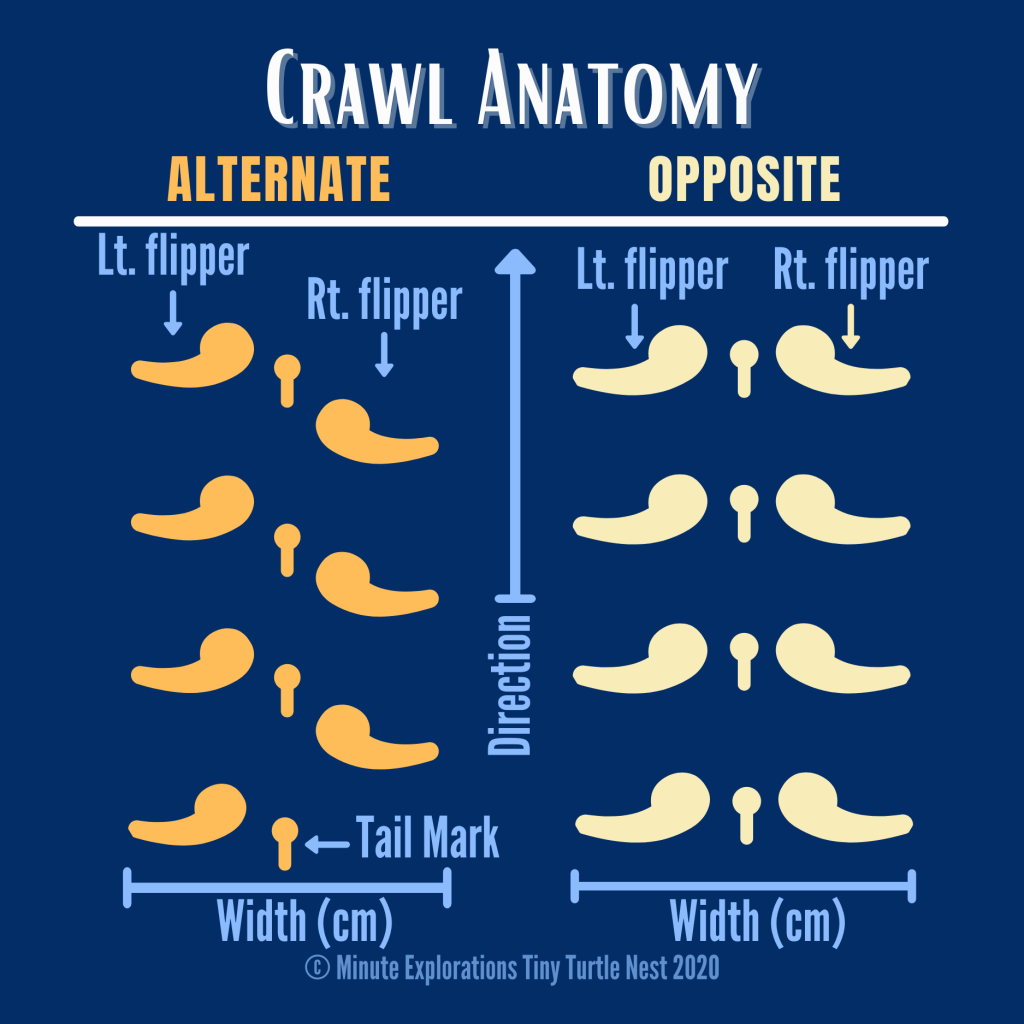
Some species leave tail impressions in the center of the track. Some species don’t. Some species have an alternating gait in which one flipper reaches up and then the second flipper reaches past the first. Others have an opposite gait in which both flippers move parallel to each other. Since sea turtles reach a certain minimum size at adulthood, the width of their tracks can help identify the species, as well. All of these different factors can help narrow down the possible identity of the nesting female. On your Crawl Identification card, the species names are abbreviations of the scientific names. For example, Caretta caretta (the loggerhead sea turtle) is abbreviated as CC.
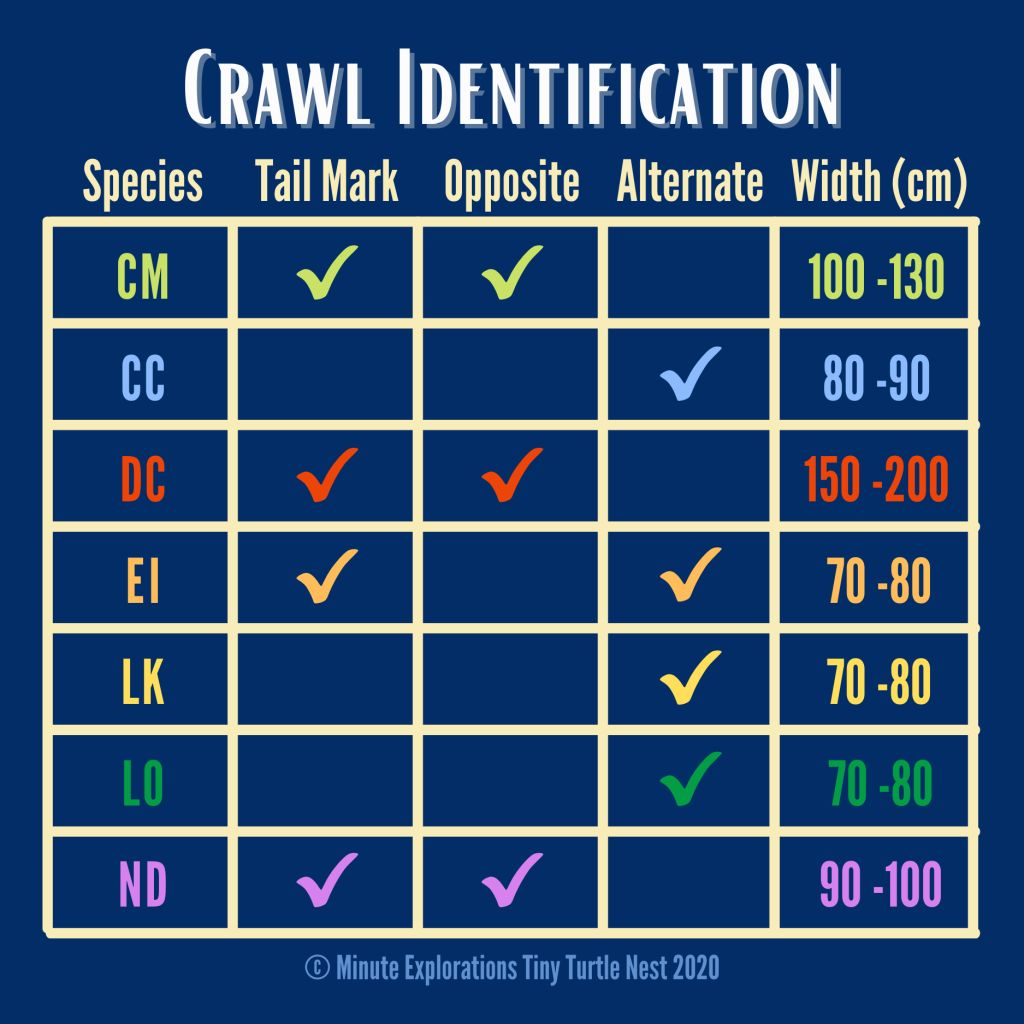
Depending on the region, some surveyors may mark the nests to avoid accidental damage by beachgoers. Some locations allow for eggs to be relocated if there is a clear and present danger where the nest was constructed. There’s a very small window of time where the eggs can be safely moved, however. Only hours after being laid, the embryos attach to their eggshells and any movement of the eggs will harm the growing babies.
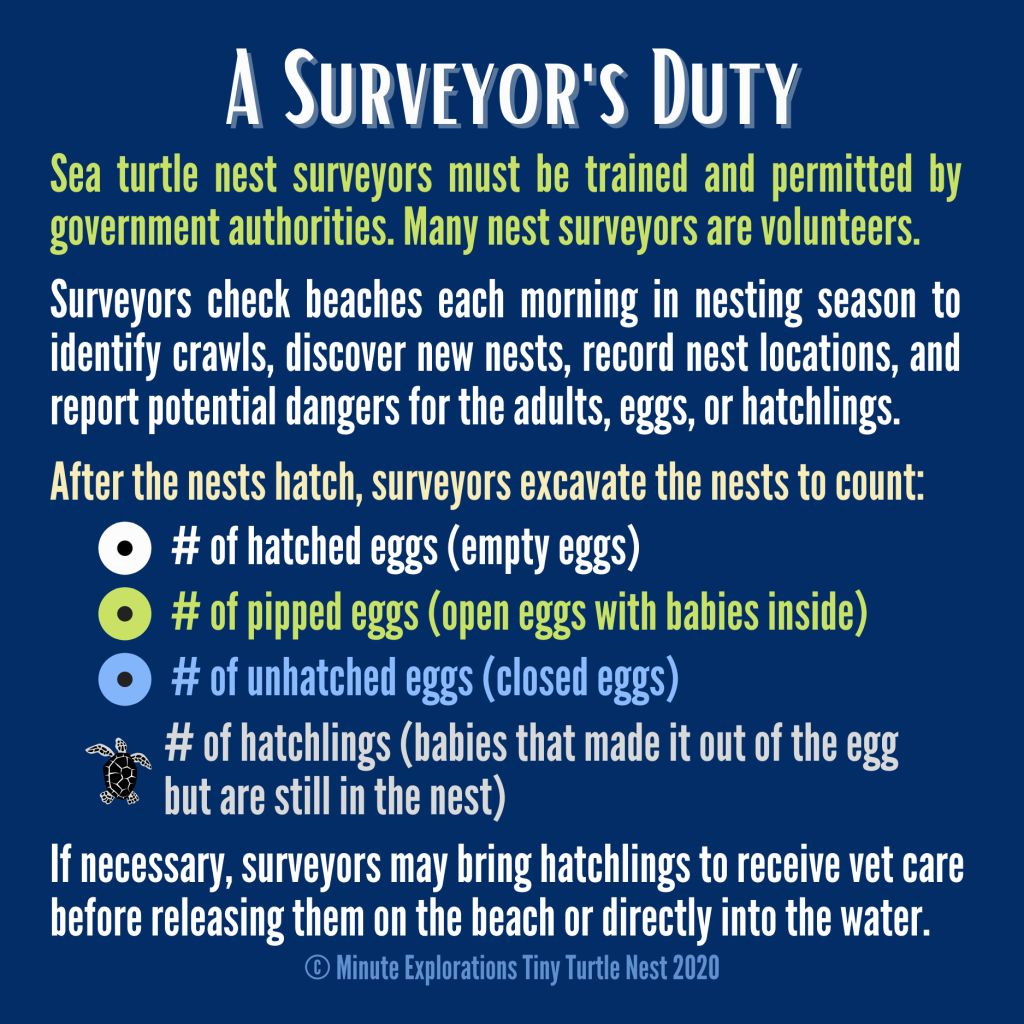
Surveyors collect additional data, including any evidence of nest predation and flooding. While everybody hopes to find a nest of empty eggshells, there are often infertile eggs, undeveloped embryos, and deceased hatchlings to document, as well. Sometimes, there are still live hatchlings that have made it out of the egg shells, but not out of the nest. Perhaps they got tangled in roots or were just too weak to make their way to the surface.
Hatchlings of all seven species tend to emerge from the sand at night. They navigate towards the ocean by keeping the darkest part of the beach behind them and aiming for the moon and starlight reflecting off of the water’s surface. The modern electric lights from streets and houses can be brighter than nature’s nighttime sources, so surveyors might visit beaches after dark to check for lost hatchlings that got confused by light pollution.
Surveyors must wait a certain period of time after a nest hatches before excavating the nest to collect data. This gives any slowpokes a chance to emerge on their own. If a nest does not hatch at all within the normal expected period of time, surveyors eventually dig up the nest to identify the possible cause of nest failure. Whenever possible, surveyors work to allow the nest to hatch naturally and to interfere as little as possible.
After excavating and documenting a nest, surveyors rebury the eggshells in the sand. The eggshells provide essential nutrients to the beach and dune plants. This helps maintain stable coastal ecosystems for the future.
Just a reminder:
Data from real sea turtle nests all over the world is collected, shared, and studied to help scientists understand how many sea turtles are being born. If you enjoyed this activity and think that you would be like to become a real-world sea turtle nest surveyor, please consider volunteering with your local sea turtle group!
Want to explore more Tiny Turtle Nests?
For information about teaching sets of 10 or more, email me at naturalist@minuteexplorations.com. Thank you for sharing the wonder of sea turtles!










